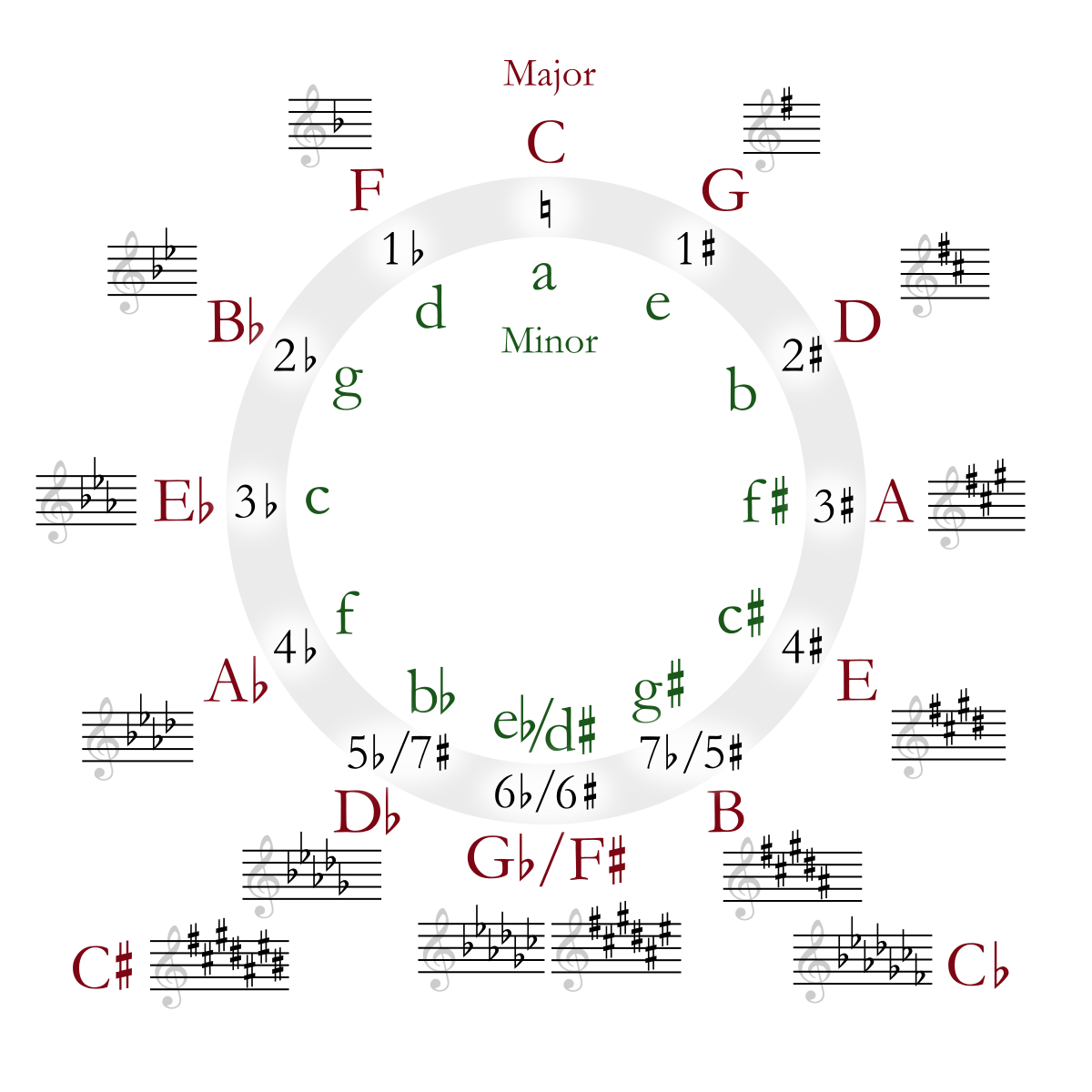A Satisfying Chord Progression
12 Jun 2021As an enjoyer of different genres of music, I would like share with you a very satisfying chord progression that never fails to amaze me whenever I listen to it.
Note: Due to the lack of HTML support for the half-sharp/flat symbols, I will be using ½♯ & ½♭ to denote them.
Some Theory
In classical music theory, a very common musical cadence is the ii-V-I, where chords traverse counterclockwise two steps to the tonic chord. This brings the listener a sense of closure, a sense of “home”. In the diagram below, given the key of C major, we would travel Dmin-G(7)-C; in the key of A major, Bmin-E(7)-A; you get it.

Another way of providing harmonic motion, or traversing the circle of fifths, is to use chromaticism. By moving to neighbouring tones, one is making a large leap on the circle of fifths.
The Progression
The music I want to share with you is Sevish’s Gleam, which is an electronic piece that uses 22-tone equal temperament and a 5/4 beat.
Western classical music currently divides the octave into 12 steps; Gleam here divides it into 22. This allows us to get almost double the notes in an octave, with notes that can “fill in the gap” between semitones.
Said chord progression starts at 0:54. The idea is very simple: a descending chromatic, leaving the listener wondering where the destination is, and then hitting them with a V-I to signify arrival. However, as mentioned above, with the use of 22-TET, chromatic scales can mean descending in almost quarter tones.
Coupled with an ascending chromatic line above, we get a peculiar soundscape that is rarely heard: C½♯min - C9(omit7) - B½♯(½♯9) - B - B½♭7(♯9) - E - B♭7 - A(♯11). I have bolded the chords that follow the classical ii-V-I motion: they act as a reminder to the listener, bringing a tinge of familiarity as to not make 22-TET completely alien.
Conclusion
Yeah, nothing much. This is just cool. I’m nerding out.
